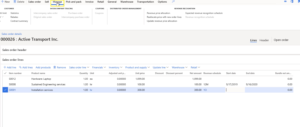If you are interested in learning more about revenue recognition using Microsoft Dynamics 365 Finance, contact us here to find out how we can help you grow your business. You can also email us at info@loganconsulting.com or call (312) 345-8817.
The Basics of Revenue Recognition in Dynamics 365 Finance
Posted on: August 31, 2022 | By: Guy Logan | Microsoft Dynamics AX/365, Microsoft Dynamics Manufacturing
Revenue recognition identifies the specific conditions in which revenue is recognized and determines how to account for it. It is imperative to have proper revenue recognition to ensure the integrity of a company’s financial reporting. Essentially, revenue recognition is used to standardize the revenue policies used by companies which allows external investors to easily compare the income statements of different companies in the same industry. Since revenue is one of the most important measures used by investors to assess a company’s performance, it is crucial that financial statements be consistent and credible.
Microsoft Dynamics 365 Finance makes revenue recognition a seamless process. With D365, you are able to allocate revenue to help ensure that the appropriate revenue price is recognized, based on the value of the components on multi-element orders. You are also able to defer revenue based on a revenue schedule that represents the contractual time frame and percentages for recognizing revenue over time. To learn more about how D365 can help with revenue recognition continue reading this blog.

The Revenue recognition feature provides a flexible framework that lets you define company-specific rules for recognizing both the revenue price and the revenue schedule.
Released products are used to support revenue recognition on sales order documents. The released products contain the setup that is required to determine the revenue price and the revenue schedule. The sales order can originate from a Time and materials project.
Companies can use the revenue schedule functionality without using the revenue price functionality. Therefore, the price on the sales order lines will be used as either revenue or deferred revenue. If a revenue schedule exists on the sales order line, the price on the sales order line will be deferred. If a revenue schedule doesn’t exist on the sales order line, the price on the sales order line will be posted to a revenue account when it’s invoiced.
The revenue price is calculated either when the sales order is confirmed or when the invoice is posted. To preview the revenue price before the invoice is posted, you must confirm the sales order.
When the sales order is confirmed, an expected revenue schedule is also created if any sales order line has a revenue schedule. When the sales order is invoiced, the expected revenue schedule is deleted, and the expected revenue schedule is replaced with the actual revenue recognition schedule.
The details of the revenue recognition schedule are maintained for each sales order line. Therefore, the revenue recognition manager can view the details and can release lines to revenue when the contractual obligation has been completed. At the end of each period, the revenue recognition manager can create a revenue journal to release any schedule lines that are due on or before a date they define. This revenue journal isn’t posted immediately. Therefore, the revenue recognition manager can verify that the correct amounts are being released from deferred revenue to actual revenue.
If a contractual change causes a new sales order line to be added either to the existing sales order or a new sales order, a reallocation process can be run to correct the revenue price across all lines on the sales orders.
